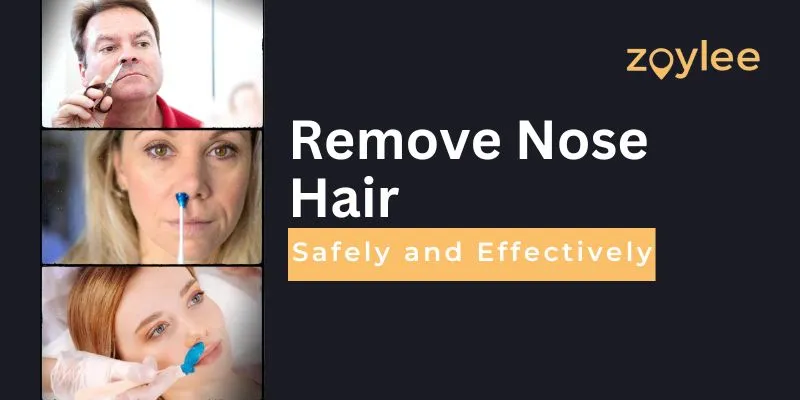
Nose hair can be a pesky problem for many, but fear not! With the right techniques, you can bid farewell to those unwanted strands and embrace smoothness with confidence. In this guide, we’ll explore safe and effective methods for removing nose hair at home, providing you with the knowledge you need to achieve a hair-free nose effortlessly.
Before delving into the methods, let’s understand why removing nose hair is essential. Excess nose hair not only affects appearance but can also lead to discomfort and hygiene issues. By keeping your nasal passages clear of hair, you can breathe easier and maintain a polished look.
Trimming is a quick and painless way to manage nose hair, especially for those who prefer a less invasive method. To trim nose hair at home, use a pair of small, rounded-tip scissors or a specialized nose hair trimmer.
Gently insert the trimmer into your nostrils and carefully trim any visible hair. Be sure to trim evenly and avoid cutting too close to the skin to prevent irritation.
For a more thorough removal, waxing strips can be an effective option. However, it’s essential to choose strips specifically designed for use on the nose to ensure safety and minimize discomfort.
Follow the instructions provided with the waxing strips carefully, and be sure to apply them only to the outer edges of your nostrils. After applying the strip, firmly press it down, then quickly pull it off in the opposite direction of hair growth for smooth results.
Depilatory creams offer another convenient way to remove nose hair at home. These creams work by breaking down the protein structure of the hair, allowing it to be easily wiped away.
To use a depilatory cream for nose hair removal, apply a small amount to the area around your nostrils, taking care to avoid getting the cream inside your nose. Leave the cream on for the recommended amount of time, then wipe it away with a damp cloth or tissue.
For those seeking a more long-term solution, there are permanent methods available for nose hair removal. Laser hair removal and electrolysis are two popular options that can provide lasting results. However, it’s essential to consult with a qualified professional before undergoing any permanent hair removal treatment to ensure safety and effectiveness.
Read Also: How to Remove Facial Hair Naturally?
With these simple yet effective methods, you can say goodbye to unwanted nose hair and hello to smooth, hair-free nostrils. Whether you prefer trimming, waxing, or depilatory creams, there’s a solution out there to suit your needs.
Remember to prioritize safety and follow the instructions carefully to achieve the best results. Say goodbye to nose hair woes and embrace a confident, polished appearance today!
To remove nose hair at home, you can use scissors in front of a mirror. However, it’s essential to use small, rounded-tip scissors specifically designed for trimming nose hair. Gently insert the scissors into your nostrils and carefully trim any visible hair, ensuring not to cut too close to the skin. Be cautious and trim evenly to avoid irritation or injury. Additionally, always ensure proper lighting and a clear view in the mirror for precise trimming.
Yes, it is generally okay to remove nose hair, as long as it is done safely and carefully. Nose hair serves as a natural filter, trapping dust, pollen, and other particles from entering the nasal passages. However, excessive or visible nose hair can be unsightly and may cause discomfort.
The most painless way to remove nose hair is typically through trimming. Using small, rounded-tip scissors or a specialized nose hair trimmer, you can gently trim any visible hair without causing discomfort. Trimming allows for precise control and minimal irritation compared to other methods such as waxing or plucking. Ensure to trim evenly and cautiously to avoid cutting too close to the skin, which could lead to discomfort or injury.